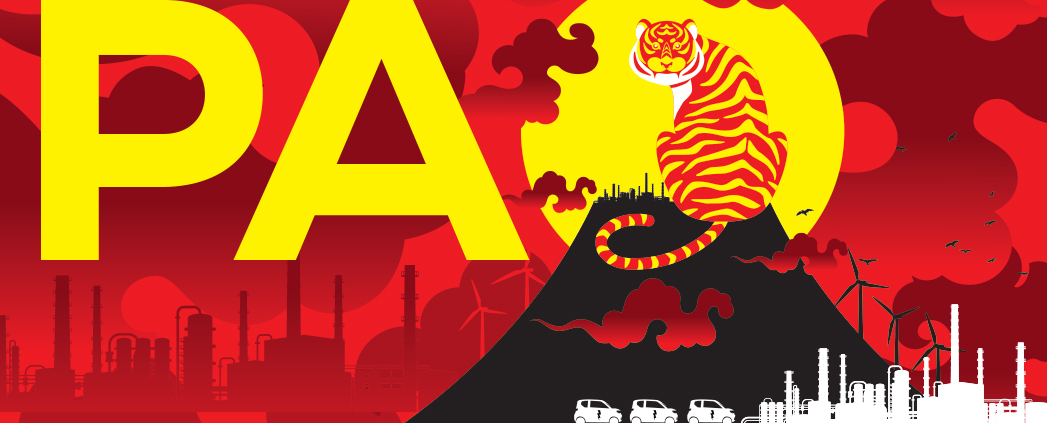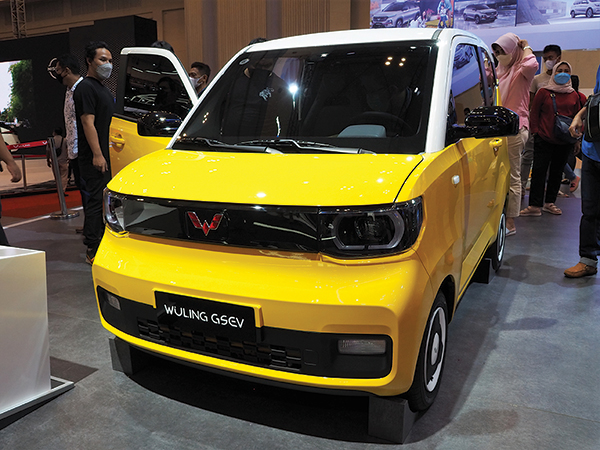
As China welcomed the year of the tiger with its annual Spring Festival last month, it also ushered in a new era of base oils. Historically a major importer, the country has seen its base stock production capacity increase exponentially in recent years. That includes an uptick in polyalphaolefin manufacturing, which continues to escalate as more domestic players throw their hats into the ring.
China overtook the United States in base oil refining capacity in 2021, bringing its total to 14 million metric tons per year, or about triple what it was in 2010, according to Lubes’n’Greases Base Stock Plant Data.
The jump could be due in part to a nationwide effort to ensure self-sustainability in a number of industries. The country is looking to rely less on imports and establish a baseline of domestic production.
That focus has had effects on China’s base oil industry, which is at a record high. In addition, the base stock quality has improved. API Group I and naphthenic base oils no longer dominate Chinese production, as Group II and Group III products grow in capacity. In addition, state-owned businesses no longer constitute the entire industry. Independent suppliers have opened a number of facilities in the country in the past decade.
The increased focus on polyalphaolefin has been part of this growth. Though international majors still heavily influence the Chinese market, local suppliers are growing in number, even those not traditionally involved in the base oil and lubricants industry.
PAOs are made from chains of linear alpha olefins—derived from ethylene—assembled to a desired weight and performance. The preferred feedstock for these base stocks is 1-decene, a hydrocarbon molecule with 10 carbon atoms, though it can also be used to make products other than PAO.
PAOs provide improved high-temperature wear protection and have better oxidative stability than mineral base oils do. Perhaps most important, these synthetic base stocks can be used to make low-viscosity, low-volatility 5W- and 0W-grade engine oils. But PAOs typically run at a much higher cost than Group III base oils, explained Amy Claxton, CEO of My Energy Consulting.
“For a company to want to increase PAO production, it must receive a price for PAO higher than other products they could make from 1-decene,” she said. “You do not need to use PAO especially if you have access to Group III, Group III+ and gas-to-liquid.” She added that PAO makes up less than 1% of global base oil supply.
But China has had difficulties making Group III in the past, Claxton said. Either the volume or the quality of crude oil available to the country was too low to make high viscosity index base oils. However, the country has added a fair amount of Group III capacity, indicating that it may be overcoming those challenges.
Chinese refiners have also tried to make high quality lubes from the Fischer Tropsch process—which converts a mix of carbon monoxide and hydrogen into liquid hydrocarbons—using coal-to-liquid methods at two plants. However, the country ran into problems when it struggled to access fresh water in inner Mongolia where the coal was located. It also encountered other technical issues. Luan currently employs this process.
“China needs some high viscosity index material,” Claxton said. “They cannot economically make high volumes unless they reconfigure crude allocations to multiple refineries to focus on base oil at the expense of refining fuel products, which is highly unlikely. Nor will large-scale CTL be commercially viable in coming decades.”
Because of this, “China imports PAO in addition to Group III and Group III+ high viscosity index base oils,” Claxton continued. “And China can certainly make more PAO—lots more—as can all the majors any time economics support it. It’s a global market, but China has internal and non-Western business decision-making constraints.”
Global PAO capacity is currently about 729,000 metric tons per year, according to Lubes’n’Greases Base Stock Plant Data. The majority of this capacity comes from just three companies: ExxonMobil, Ineos Oligomers and Chevron Phillips Chemical.
ExxonMobil sits atop the pile with a total of 301,000 t/y of PAO capacity. Ineos follows with 230,000 t/y and Chevron Phillips Chemical comes in at 130,000 t/y. The next closest supplier is Shanxi Lu’an Group at 23,000 t/y. The largest portion of total global capacity rests in Texas, where ExxonMobil’s 146,000 t/y Beaumont facility—the largest in the world—is located.
Among the big three majors there are a few European facilities. ExxonMobil runs a 105,000 t/y site in Gravenchon, France; Ineos has a 125,000 t/y plant in Feluy, Belgium; and Chevron Phillips Chemical also operates a facility in Belgium with a 63,000 t/y plant in Beringen.
In China, capacity totals just 48,000 t/y after PetroChina opened a 10,000 t/y facility in January. Among domestic producers, Naco Lubrication has been in the market the longest, having opened a 15,000 t/y wholly owned plant in Shanghai in 2014 and a 15,000 t/y joint venture with Lu’an in Changzhi in 2015. Last year Naco underwent a restructuring that resulted in the closing of the Shanghai plant. In addition, Naco’s parent company, Dowpol Chemical, took over sales of PAO produced at the Changzhi plant. Dowpol claims to still be the largest merchant PAO supplier in the region.
PAO Producers in China
| Company | Location | Capacity |
|---|---|---|
| Shanxi Lu’an | Changzhi, Shanxi | 23,000 t/y |
| Dowpol-Lu'an | Changzhi, Shanxi | 15,000 t/y |
| PetroChina | Lanzhou, Gansu | 10,000 t/y |
| Apalene Technology Co. | Hangzhou, Zhejiang | 10,000 t/y* |
Another company is working to enter the fray. Startup Apalene Technology Co. says that it has developed a metallocene process necessary to produce PAO and that it is in the process of building a 10,000 t/y manufacturing facility, capable of making both high- and low-viscosity PAO, near Hangzhou in the Zhejiang province. Metallocene catalysts have no molecular side chains and produce PAOs with improved shear stability, viscosity index and low-temperature performance.
The company hopes to begin production by the end of 2022 for commercial sales, but Vice President of Sales and Marketing David Du said that it may license its technology to other companies entering the PAO business.
Apalene, which has received financial investments from three other companies, will also look to attract a partner to invest in a larger project—it wants to eventually expand its PAO plant to 30,000 t/y—or even partner with a company like Luan, which may be looking to expand. The company, which has already laid the groundwork on its plant, wants to conduct an initial public stock offering by 2025.
“PAO production is quite new for everyone in China,” Du told Lubes’n’Greases. “Even though we’re small, we’ve been developing this process for five or six years already.” He also noted Apalene’s founder has a background in catalysts, and the original plan was to build a catalyst business—not to produce PAOs.
The Chinese market commands demand of 50,000 t/y, most of which is supplied by the big three international PAO players.
Du said that PAO prices are stable as it stands. He also said to expect more investment into the space from Beijing-based Sinopec, the largest oil and petrochemical conglomerate in the world.
The shift toward lower-viscosity engine oils is a big reason why new companies see the opportunity to enter the space. Established majors are also looking to expand. ExxonMobil announced last October that it was expanding capacity at its Baytown plant to 60,000 t/y from 50,000 t/y. In 2019, Ineos said it would build a PAO and linear alpha olefin plant in Saudi Arabia—the first such facility in the Middle East—with hopes to begin production in 2025. Its PAO production capacity was not disclosed.
Wind turbines and the Chinese government’s continued encouragement for companies to reduce carbon emissions will also drive that growth, Du said. “Renewable energy is booming in China—both heavy grades and low-viscosity grades,” he said.
China accounted for 45% of global growth in wind capacity in 2019. Gear oils are often made with high-viscosity PAOs. Global Lubricants for Wind Turbine Market, a New York City-based market research firm, projects that gear oils would be the fastest growing lubricant segment with a compound annual growth rate of 8.1% from 2018 to 2026.
Reportedly, almost all PAO produced in China is high-viscosity grades. PetroChina says its new Lanzhou-based facility is the first low-viscosity PAO plant in the country.
“This is an important achievement of the national key research and development plan project, ‘Key Technology Research and Application of High-performance Lubricating Oil Production,’” the company said in a press release translated by a third party.
“Tests done by authoritative institutions show that the performance of low-viscosity PAO products manufactured by [the company] reaches the technical level of similar foreign products, with many core properties such as viscosity index, pour point, flash point and low-temperature dynamic viscosity surpassing that of similar foreign products,” the announcement said. It also stated that the new low-viscosity product marks the “entrance of China’s PAO lubricating base oil production technology into the international advanced rankings.”
Du predicts that more low-viscosity PAOs will soon be in production domestically. China has some of the most stringent emissions standards in the world. Passenger car motor oil specifications for original equipment manufacturers updated in 2020, from 5W-20, 5W-30 and 5W-40 grades to 0W-20 and 0W-16. Some local brands are working to develop 0W-12 engine oils, he said.

Complications have stymied China’s progress on the low-viscosity front. PetroChina noted some of the difficulties it had to overcome in developing the technology, including heat release of the polymerization catalyst.
“China is a competitive market,” Du said. “There are opportunities in the market, but also competition will be severe.”
Zhang Chenhui, a consultant based in China, echoed that sentiment, noting that the rise of electric vehicles—China is the largest market globally—will benefit the industry.
PAOs can be used in fluids and coolants for EV batteries along with greases and driveline fluids. At an industry event, ExxonMobil said a PAO blend it developed could significantly lower friction and torque loss compared with Group II+ and Group III+ blends, which can improve energy efficiency resulting in extended range. The PAO blend can also provide higher film thickness, meaning better wear protection in gears and bearings, for example.
“We are cautiously optimistic about the PAO market in China,” Chenhui said.
Will Beverina is assistant editor for Lubes’n’Greases. Contact him at Will@LubesnGreases.com